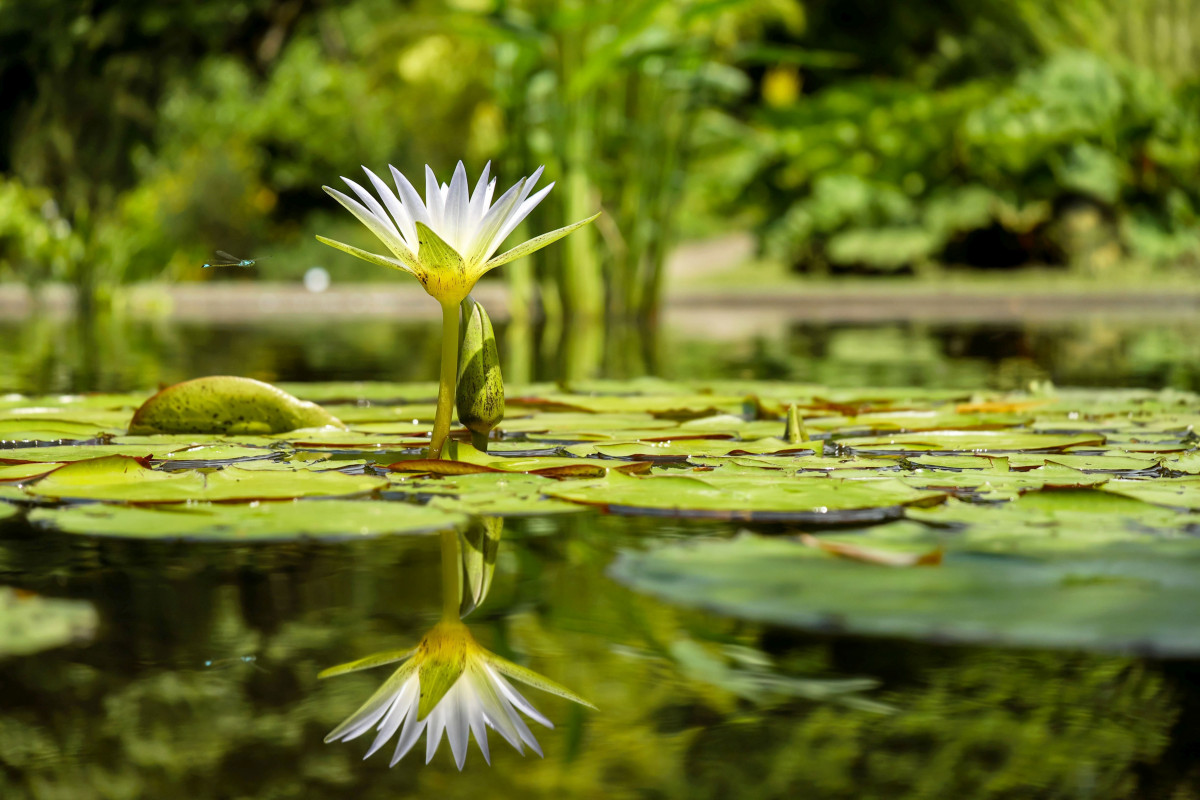Buyer’s Guide On Efficient Pond Vacuum For Outdoor And Indoor Water 2022
It goes without saying that a good vac cleaner is a must if you have a pool, a koi pond, or a water fountain in your garden. It is also important to know how to make a pond vacuum cleaner last longer and work with the maximum efficiency. Here are general buyer tips.
Quick Navigation
What is a Pond Vacuum and Why You Need It?
Both artificial and natural outdoor water reservoirs (pools, fountains, water gardens, etc.) tend to get dirty over time. Debris settle onto the bottom and form a layer of organic sludge that makes water unclear and serves a source of bacterial infections. If not removed, this sludge can cause plants and fish diseases and even death. The easiest way to clean out the debris is using a pond vacuum cleaner. The principle of working of this device resembles the mechanism of action of a conventional household vac. Instead of air, it sucks and (optionally) filters water, collecting debris.
✅ Best POOLWHALE Portable Pool Vacuum Jet Underwater Cleaner
This is the vaccum stop searching! – This is a pretty good vacuum. It sucked up larger debris from the bottom of the pool pretty well. The base did disconnect at one point while using it. It would have been better if the unit could have screwed together instead of relying on pressing it together. think a bit of super glue will fix the issue, so it’s not a huge deal . Just a bit of a delay and minor annoyance.
What Are The Types of Water Vacuums?
Basically, there are two garden pond vacuum cleaner types. Though the principle of action and the purpose of different devices are identical, they vary in terms of the power source. In particular, one can choose between electric and hand-pumped models.
- Hand-pumped models are lightweight, inexpensive, and easy to use in small water resservoirs, fountains, and aquariums. They require manual pumping. The process is rather slow and the efficiency is relatively low.
- Electric models are much more powerful and versatile. They are used for the cleaning of larger natural and artificial ponds and pools and can suck pebbles, small stones, and other types of hard organic debris.
Electric vacs are much more popular and powerful; they are chosen for a hassle-free cleaning of all kinds of water reservoirs. Manual options are for tiny impoundments and large aquariums.
Things to Consider When Choosing a Pond Vacuum
Even a small pond vacuum is a relatively expensive device, not to mention heavy automatic and semi-automatic machines. This is not a kind of an appliance you are going to buy every month or every year. That’s why it is crucial to choose the right cleaner not to be disappointed. Here are the main things to consider.
- Power Consumptions
Water vacuum cleaners have to suck large amounts of water and hard debris from a reasonably big depth, filter it, and discharger the remaining water. This is an extremely energy-consuming procedure, so the power consumption of a good water vac starts from 1000 W. When choosing a vac, one must consider that the power is directly related to the size and depth of the pond as well as the amount of sludge. The deeper and dirtier the pool is, the more powerful cleaner you need.
- Debris Size
Do you need to clean an impoundment from silt and algae or from larger debris, such as fallen leaves and small parts of solid waste? Most powerful models can suck in even small stones and pebbles. To collect large-sized and hard debris need a vac with a higher sucking power and special nozzles. A basic single-head nozzle is good for small-sized debris and silt only.
- Water Return Valves
A machine with a return valve will not simply suck in the water and discharge it somewhere on a lawn. It will return the filtered water back to the pond. It helps to keep the lawn clean and dry all the time.
- The Size of Your Pond
There are, probably, no two identical water pieces. Their size, depth and bottom counter vary significantly. Choosing a cleaner check what size water pools it fits. This information can be found in the product’s specs. Keep in mind that a weaker device will be simply inefficient.
- Vacuum Type
The type of vacuum determines the suction power. Commonly, one-chamber and two-chamber options are distinguished. Two-chamber devices are more powerful and have a larger capacity. Their main distinctive feature is an ability of continuous vacuuming: they don’t need to switch between suction and discharging constantly.
- Cleaning Depth
The hose length is not the only thing that determines the maximum cleaning depth of a pond vacuum. The deeper you submerge the nozzle, the more power the device needs to suck in the water. The maximum depth is always indicated in the list of a vac specs. The right cleaner must reach the bottom of your pool and be powerful enough to work at this depth.
Benefits of the Best Pond Vacuum Cleaner
There are several methods of cleaning water pools. You can clean it manually (just physically remove the dirt) or use some chemicals that kill bacteria (and useful plants). Meanwhile, there are strong reasons to spend some time and pick up a vac cleaner. Why is it so important to choose the best pond vacuum? Here are just some thoughts.
- Reduced Interference
A good vacuum is almost 100% safe for fish and plants. This is its core advantage against chemical and physical methods of cleaning. High-quality vacs effectively remove sludge and debris without making any harm to the natural reservoir inhabitants.
- The Cleaning is More Effective
As of today, cleaning ponds with water hoovers is the most effective method. To reach the same effect by cleaning it manually you’ll spend way more time and efforts. Using a vacuum cleaner is the most convenient, cost-effective and efficient approach.
- Cost-Effective
Yes, pond vacuums can seem a bit pricey and they consume much power. But if you calculate the real cost of other methods of cleaning, you’ll that it is worthy of it. If you hire professionals to clean your pond, you have to pay. If you do it on yourself, you lose your precious time. A vacuum helps save money and time.
- Better Waste Removal
Vacuuming is sometimes the only way to remove debris from the bottom and walls of the pond. Neither water filters nor chemicals remove a thick layer of sludge and silt effectively enough. With a vacuum, the pool will be crystal clear.
Five Facts about Vacuum Pond Cleaners
- Some vac cleaner models can be used in ponds with live fish, but beware that fish babies can be sucked into a hose.
- Never use a pond vacuum to clean a swimming pool with people in it. It can be dangerous.
- The construction of a water vac is identical to the construction of a household vacuum cleaner, but it must be more powerful to be able to suck water.
- Vacuuming is the safest and the least aggressive method of impoundment cleaning.
- Vacuuming helps to minimize the chemical processing of swimming pools with chlorine.
How To Clean The Vacuum Pond Cleaners?
All the debris collected, sludge, silt, murk, and dirty water pass through the cleaner’s tubes, hoses, and chambers. A sufficient part of sludge can settle on the walls of the machine’s inner parts. That is why it is crucial to clean it regularly. Disassemble your vacuum after every use and clean all its parts separately from inside and outside. Rinse them with clean water and let them get dry in a natural way. After that, assemble the cleaner and store it in a dry place until the next use.
How To Use The Vacuum Pond Cleaners?
Even a cheap pond vacuum is a relatively powerful device that can be easily damaged if used improperly. To make the most of using a vac, adhere to several basic tips.
- When attaching a nozzle, make sure it falls in its place and secured. If it is not secured reliably, it can drop away right under the water, and you’ll have a hard time trying to reach it. If you attach it improperly, you may simply break it down.
- The same is about hose securing. Attach it to the tube or a vacuuming head correctly. Always avoid twisting of the hose, especially in the course of vacuuming.
- Keep a nozzle (a head) under the water – it must touch the bottom or walls of the pond. The extension tube and a handle should be out of water.
- Don’t forget to switch off the filter installed in the impoundment before you begin vacuuming.
- To clean the pool, move the vacuuming head slowly. Your movements should be smooth and slow; and the head should touch the walls and the bottom under the water.
- When the vacuuming is over, disassemble and clean the vac, remove the filter, dump out the collected debris, and rinse the filter.
- After that, switch on the pond filter.
How To Do Proper Maintenance Of The Vacuum Pond Cleaners?
Like any modern appliance, a water vacuum requires a proper maintenance. The best approach is to read the user manual and the troubleshooting guide right after unboxing – particular recommendations can vary depending on the vac model. Here are general tips that can be applied to most water vacuum cleaners.
- Clean the inner parts, including the filter, after every use. Don’t leave the device with sludge and debris inside it.
- Assemble the vac only when all the parts are dry. After cleaning, they must get dry in a natural way.
- Try not to store an automatic vacuum outdoors – being an electric appliance, it is not weather-resistant. Keep in in a closed dry place instead.
- Don’t use pond hoovers for dry cleaning – they are designed to work with water only.
Pros and Cons of the Pond Vaccum in Your Life
Pros:
- This is a fast and effective method of a garden pond cleaning with the minimal interference into its eco-system. There are models that are safe for fish and plants.
- A water vac helps to keep water clean and clear, remove a layer of sludge on the bottom and walls and algae.
- Natural silt is organic manure rich in nutrients. Most vacs allow to collect it and enrich the ground in the garden.
- A modern vac cleaner is as easy to use as common household hoovers – you don’t need any special knowledge to utilize it.
Cons:
- Pond vacuums are pricey. The starting price of the cheapest simplest manual device is $25-30. An average price of an electric dual-chamber machine, such as a Clear Vac pond vacuum, is around $300.
- Electric vacs consume a lot of power. Regular vacuuming can turn out rather expensive.
How does a vacuum pond work?
It works like a conventional household hoover. Water is sucked by the suction head and passes through a sucking hose to the machine’s chamber. Then it is forced to the discharge hose (the particular mechanism can vary depending on the model) and released.
Why Do You Need a Pond Vac?
A pond vac is a convenient modern tool for effective water reservoir cleaning. If you have a natural or artificial impoundment, a swimming pool, a water fountain, or any other water reservoir in your garden, you definitely need a vac to keep it clean and tidy.
How Can You Get Rid of Algae in a Pond?
Electric vacuums are best for removing algae. Consider OASE PondoVac Classic or Oasis pond vacuum – these models are believed to be rather effective against algae and other organic debris.
In a Pond with Fish, is it OK to Use a Pond Vacuum?
Yes, it is. Be careful when using a fish pond vacuum cleaner – fish babies and small species can be occasionally sucked in (it depends on the fish size and the size of the hole in a suction head.) If it happened, try to release water back into the impoundment via the discharge hose.
What does Cleaning out the Pond for Muck Mean?
Muck is formed of the remains of organic debris and accumulated on the bottom and the walls of a pond. It commonly has an unpleasant ammonia odor (rotten eggs). By cleaning out the muck, you make your reservoir clean and clear.
===> Find Even More Related Good Ideas ===>
Other Garden Enthusiast Are Reading:
✅ Trending
- Top 10 Garden Sprayer Reviewed For Pros And All 2022: Find Your Best Fit And Maintain Your Garden At Ease
- Best Backpack Sprayer 2022: Complete Buyer’s Guide For Fertilizers, Herbicides & Pesticides
- 10 Best Riding Lawn Mower For Hills: Reliable & Effective Brands To Take Care Of Your Yard 2022
✅ Outdoor Garden Design And Tips
- Free Customisable 3-Page Garden Planner Printable For Full Bloom All Year Round – The One Key To Garden Success 2022
- The Ultimate Guide To Budgie Aviary Set Up: Save Cost And Time 2022
- How To Deal With Overpopulation Of Koi Fish Ponds: Guide To Spot Breeding Season And Be Prepared 2022
✅ Indoor Design And Tips
- 4 New Ideas To Make Better Use Of Your Trash: Get Crafty To Recycle And Reduce Waste 2022
- The Loud And Clear Reminder To Get House Insurance 2022
- The Best Mosquito Trap 2022 Reviewed: Keeping Pests At Bay By Baiting Them According To Your Needs
✅ Even More Great Products
- Sun Joe TJ600E Electric Tiller Review (2022)
- The 10 Best Potting Soil For Growing Healthy Plants Indoors Reviewed 2022 | Soil Mix, pH, Product Type
- Protection From Outdoor Weather: The Buying Guide On Grill Cover and Grill Maintenance 2022
✅ Sustainable Lifestyle Products And Tips








